Learn
Internment Camp
Overcoming Challenges at Home
After the bombing of Pearl Harbor, the vast majority of Americans rallied behind the war effort. Government propaganda promoted the defense of our nation against the Axis powers, encouraging Americans to join the military, sacrificing items needed for the war effort, or work in a plant that produced war goods. The demand for laborers opened the door for women and minorities to fill the vacancies. While the war brought new opportunities for women and some racial and ethnic minorities, Japanese Americans were the victims of widespread intolerance.
Japanese Americans
After the Japanese attack on Pearl Harbor, there was widespread distrust of Japanese Americans, believing that they would not remain loyal to the United States.
- There were 127,000 Japanese Americans living in the U.S. (0.1% of the entire population) in 1941.
- 2/3 of the Japanese Americans were Nisei (pronounced nee-SAY). Nisei were people of Japanese descent who were born in the U.S. and whose parents emigrated from Japan.
War time propaganda depicted the Japanese in a very negative, demeaning, and unattractive manner. The propaganda, in combination with extremely harsh feelings after Pearl Harbor, opened the door for discrimination toward Americans of Japanese descent.

"Married exactly one year today", published by PM Magazine on December 7, 1942, Dr. Seuss Collection, MSS 230. Special Collections & Archives, UC San Diego Library From: Dr. Seuss Collection, MSS 230
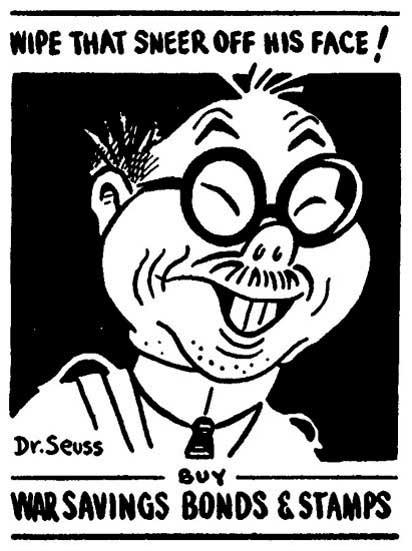
"Wipe that sneer off his face!", published by PM Magazine on October 13, 1942, Dr. Seuss Collection, MSS 230. Special Collections & Archives, UC San Diego Library. From: Dr. Seuss Collection, MSS 230
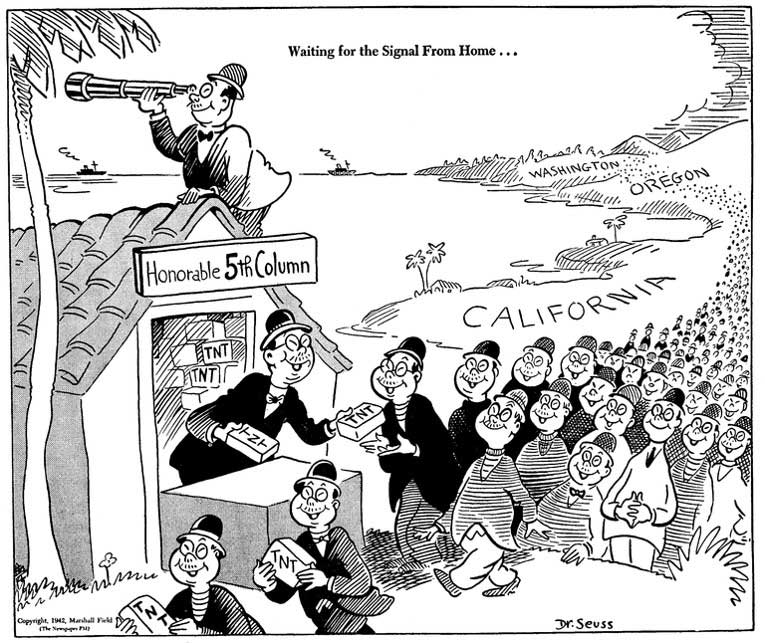
"Cite As: "Waiting for the signal from home...", published by PM Magazine on February 13, 1942, Dr. Seuss Co lection. MSS 230. Special Collections & Archives, UC San Diego Library. From: Dr. Seuss Collection, MSS 230
Executive Order 9066 - Japanese Relocation
Under pressure, President Roosevelt signed an order to relocate Japanese Americans to 10 internment camps or confinement camps located in remote inland areas.
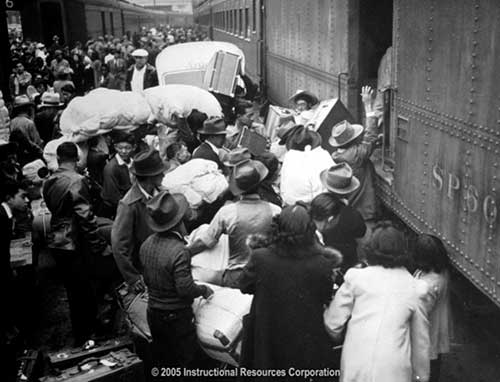
Americans of Japanese ancestry being relocated. IRC, 2005. Image. Discovery Education. Web. 27 July 2014.
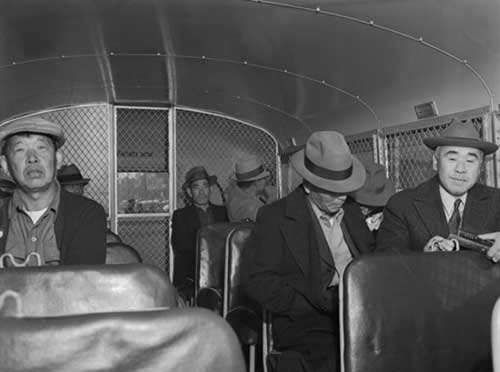
Japanese Americans in a bus being taken to an internment camp

Lunch line at the Manzanar relocation camp
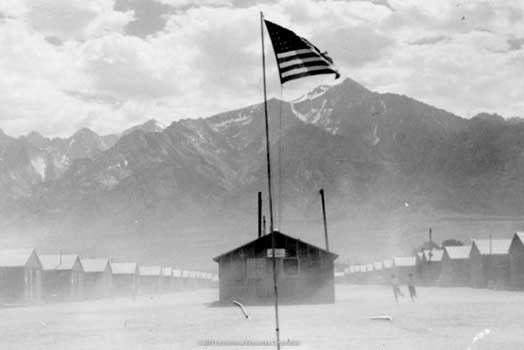
Barracks in the Manzanar relocation camp. IRC, 2005. Image. Discovery Education. Web. 27 July 2014.
Executive Order 9066 authorized the creation of war zones on the west coast and the removal of Japanese Americans from these zones.

An internment notice
Legal Challenges
It was not until early 1945 after the case of Korematsu v. the United States was brought before the Supreme Court that the U.S. government began to release the Japanese from the internment camps.
In 1988, the U.S. government officially apologized and awarded each surviving Japanese American internee a tax-free payment of $20,000.
Nisei Soldiers
17,000 Japanese Americans served in the armed forces during World War II. The 442nd Regimental Combat Team, made up entirely Japanese Americans, won more medals for bravery than any other unit in U.S. history. These Nisei soliders (pronounced nee-SAY) were people of Japanese descent who were born in the U.S. and whose parents emigrated from Japan.
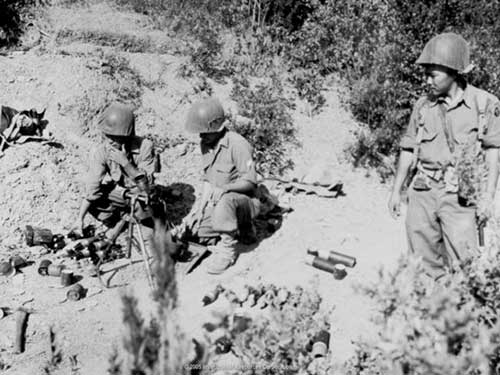
Japanese-American WWII soldiers fighting in Italy. IRC, 2005. Image. Discovery Education. Web. 27 July 2014.